william blake
︎Artist, Poetry, Illustration, Spirituality
︎ Ventral Is Golden
william blake
︎Artist, Poetry, Illustration, Spirituality
︎ Ventral Is Golden
︎ Ventral Is Golden
"Hear the voice of the Bard!
Who Present, Past and Future sees,
Whose ears have heard the Holy Word,
That walked among the ancient trees. "
Who Present, Past and Future sees,
Whose ears have heard the Holy Word,
That walked among the ancient trees. "
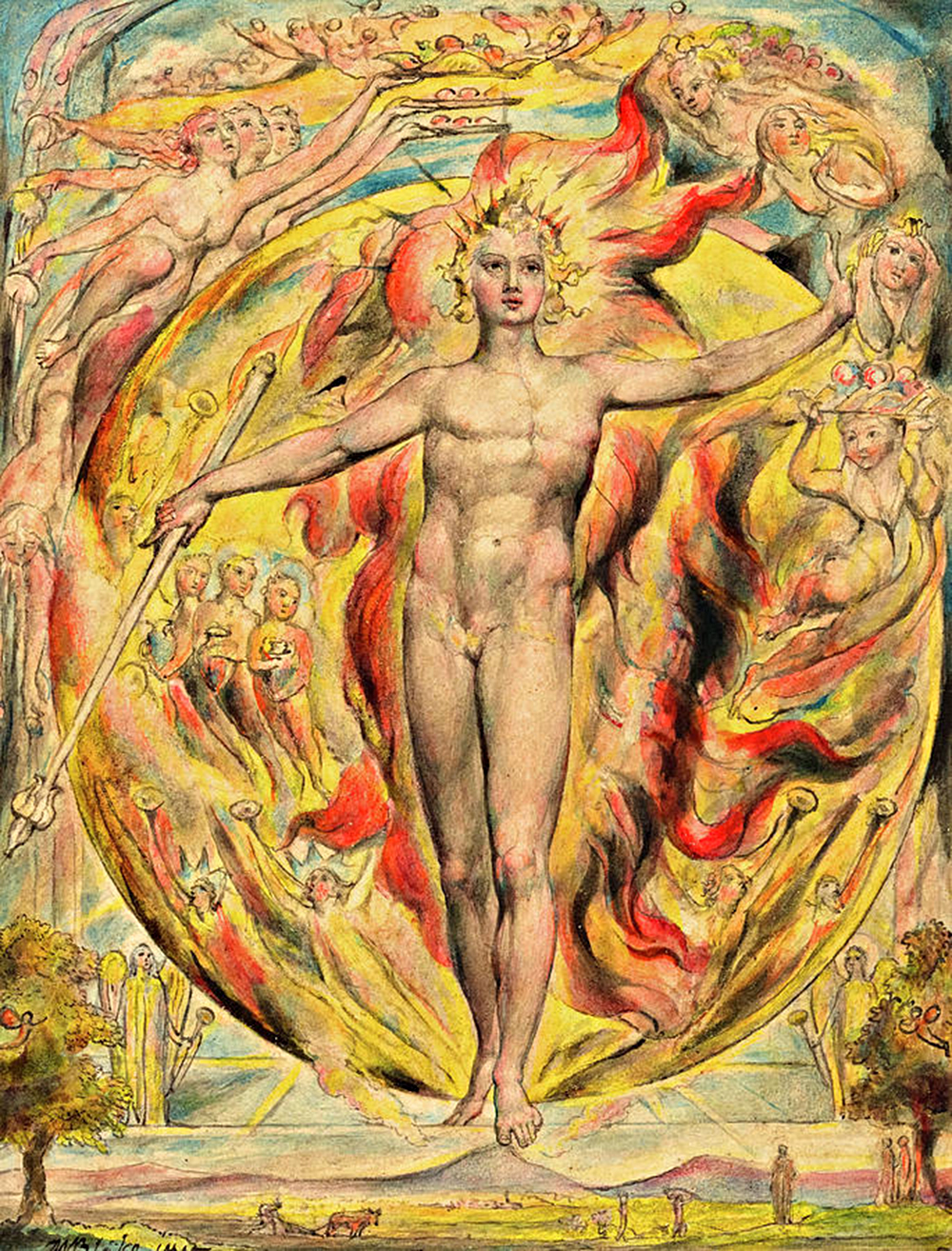
Master engraver, illustrator, poet, story-teller and spiritual revolutionary, throughout his life, William Blake endeavoured to reconnect the divided psyche of industrialised man back to its divine and eternal self.
Blake was born on November 28th, 1757 in the UK, and during his own lifetime was subjected to various accusations of being mentally unstable, having experienced many religious apparitions and visionary experiences throughout his life and from a very young age recounted seeing God “put his head through the window” of his parents house; at the age of nine, whilst walking through Peckham Rye in London, he saw “a tree filled with angels” who’s “bright angelic wings were bespangling every bough like stars”.
Despite these accusations, Blake continued to cite the spiritual world as his true inspiration, which against the backdrop of human cruelty, social disparity, revolution and the fall of monarchies, gave rise to a concept he termed the ‘Marriage of Heaven and Hell’, which he would later publish as a book of the same name, imitating archetypes of biblical narrative and infusing them with romantic experiences and revolutionary insights that were particular to the changes he witnessed during his own era.
The legacy of William Blake continues to be felt to this day, influencing poets and musicians of contemporary culture through cosmic and visionary insights, with Patti Smith, Allen Ginsberg and other artists of the Beat Generation often ascribing their own inspiration to hearing the voice of Blake during altered states of consciousness.
Arguably Blake’s most pop-cultural reference comes via Aldous Huxley’s book about the visionary effects of Mescaline, ‘The Doors of Perception’, (also the origin of Jim Morrison’s band name, The Doors), which was taken from the afore mentioned ‘Marriage of Heaven and Hell’.
Blake was born on November 28th, 1757 in the UK, and during his own lifetime was subjected to various accusations of being mentally unstable, having experienced many religious apparitions and visionary experiences throughout his life and from a very young age recounted seeing God “put his head through the window” of his parents house; at the age of nine, whilst walking through Peckham Rye in London, he saw “a tree filled with angels” who’s “bright angelic wings were bespangling every bough like stars”.
Despite these accusations, Blake continued to cite the spiritual world as his true inspiration, which against the backdrop of human cruelty, social disparity, revolution and the fall of monarchies, gave rise to a concept he termed the ‘Marriage of Heaven and Hell’, which he would later publish as a book of the same name, imitating archetypes of biblical narrative and infusing them with romantic experiences and revolutionary insights that were particular to the changes he witnessed during his own era.
The legacy of William Blake continues to be felt to this day, influencing poets and musicians of contemporary culture through cosmic and visionary insights, with Patti Smith, Allen Ginsberg and other artists of the Beat Generation often ascribing their own inspiration to hearing the voice of Blake during altered states of consciousness.
Arguably Blake’s most pop-cultural reference comes via Aldous Huxley’s book about the visionary effects of Mescaline, ‘The Doors of Perception’, (also the origin of Jim Morrison’s band name, The Doors), which was taken from the afore mentioned ‘Marriage of Heaven and Hell’.

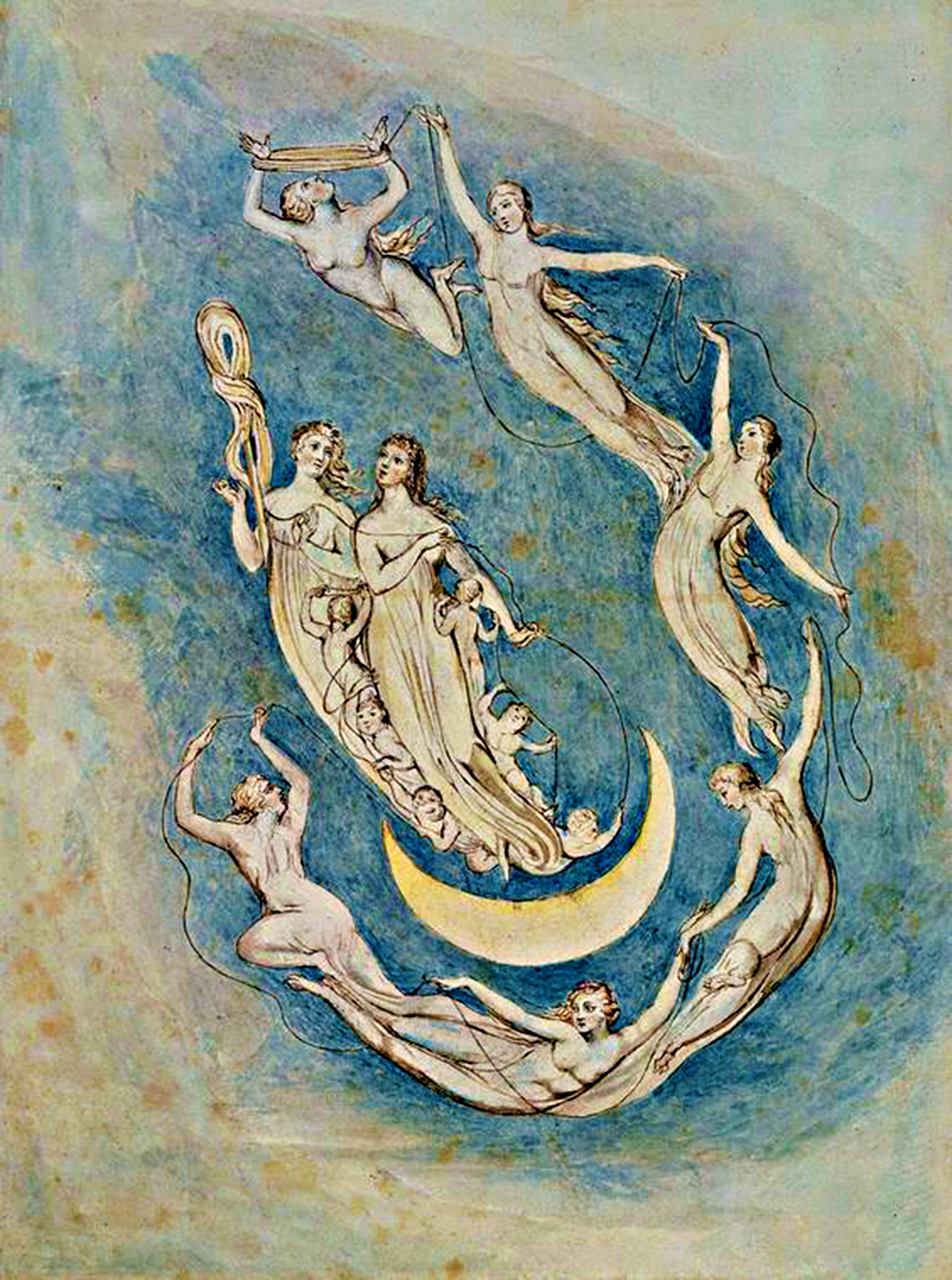

“The ancient tradition that the world will be consumed in fire at the end of six thousand years is true, as I have heard from Hell.
For the cherub with his flaming sword is hereby commanded to leave his guard at [the] tree of life, and when he does, the whole creation will be consumed and appear infinite and holy, whereas it now appears finite and corrupt.
This will come to pass by an improvement of sensual enjoyment.
But first the notion that man has a body distinct from his soul is to be expunged; this I shall do by printing in the infernal method by corrosives, which in Hell are salutary and medicinal, melting apparent surfaces away, and displaying the infinite which was hid.
If the doors of perception were cleansed everything would appear to man as it is, infinite. For man has closed himself up, till he sees all things through narrow chinks of his cavern.” - William Blake.
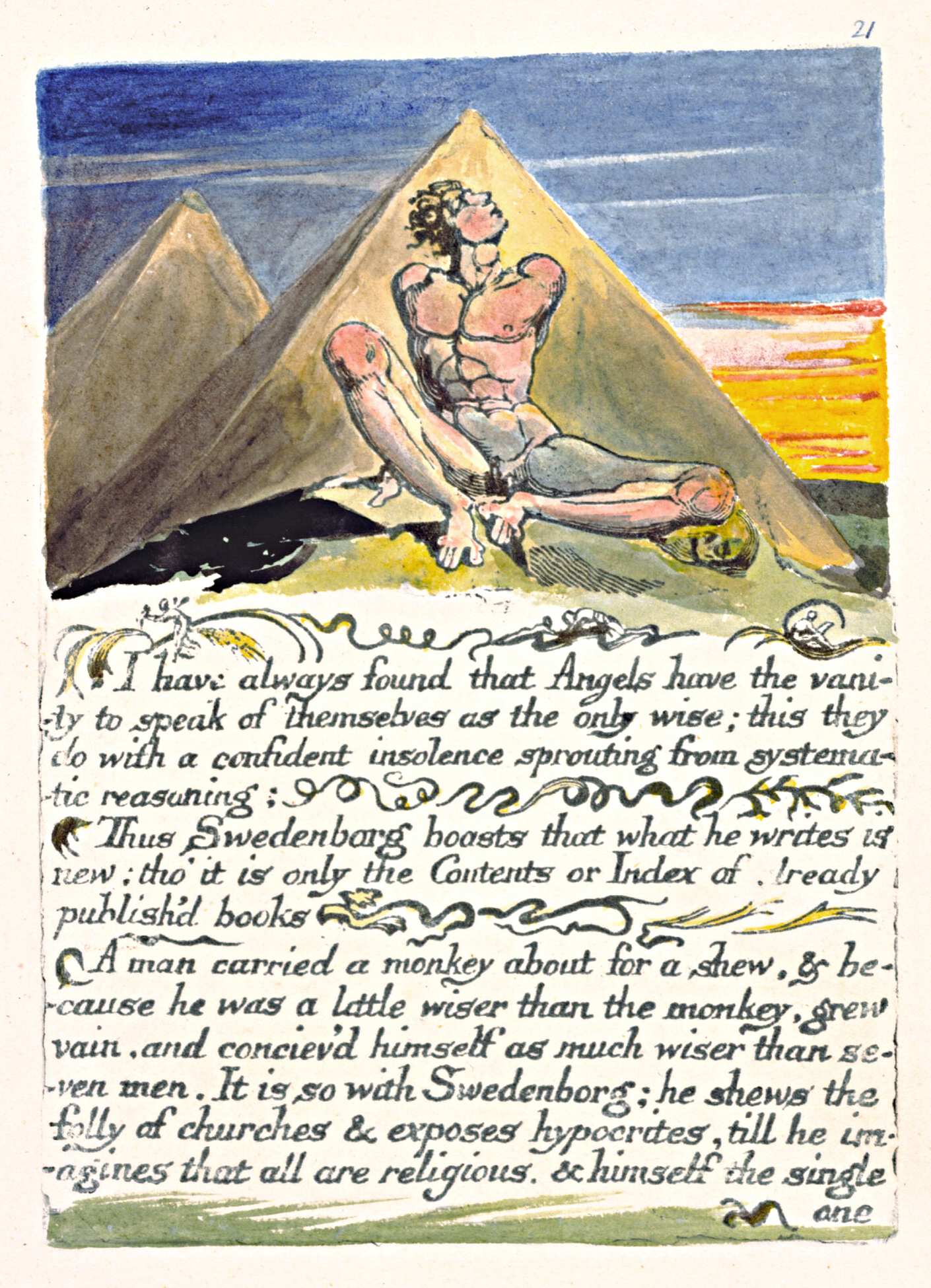
Techne - the application of a technology derrived through technique, was something very close to the alchemical spirit of Blake and his works. His illustrated poems or ‘illuminated wiritng’ were of a scribal tradition and aesthetically resembled the ‘illuminted manusripts’ of biblical texts most common between the twelth and seventeenth centuries.
It was an appropriation of this style which led Blake directly to the technique of producing text and designs on a copper plate with an impervious liquid. The plate was then dipped in acid so that the text and design remained in relief. These plates could then be used to print on paper, and the final copy would then be hand coloured (source).
Blake also stated that the inspiration for this technique was given to him by the spirit of his recently deceased brother, Robert, who he cared for before his passing. Blake announced that the spirit of Robert was ever present in his life and that without his divine intervention, the alchemical secrets of the printing technque would not have been available to him.
The dual nature of reality being both material yet emanating from an immaterial source would occupy most of Blake’s visionary insights.
“After experimenting with this method in a series of aphorisms entitled ‘There is No Natural Religion’ and ‘All Religions are One’ (1788), Blake designed the series of plates for the poems entitled ‘Songs of Innocence’. Blake continued to experiment with the process of illuminated writing and in 1794 combined the early poems with companion poems entitled ‘Songs of Experience’. The title page of the combined set announces that the poems show “the two Contrary States of the Human Soul.”
The dual role played by the poet is Blake’s interpretation of the ancient dictum that poetry should both delight and instruct. More important, for Blake, the poet speaks both from the personal experience of his own vision and from the “inherited” tradition of ancient Bards and prophets who carried the Holy Word to the nations.” (ibid).
It was an appropriation of this style which led Blake directly to the technique of producing text and designs on a copper plate with an impervious liquid. The plate was then dipped in acid so that the text and design remained in relief. These plates could then be used to print on paper, and the final copy would then be hand coloured (source).
Blake also stated that the inspiration for this technique was given to him by the spirit of his recently deceased brother, Robert, who he cared for before his passing. Blake announced that the spirit of Robert was ever present in his life and that without his divine intervention, the alchemical secrets of the printing technque would not have been available to him.
The dual nature of reality being both material yet emanating from an immaterial source would occupy most of Blake’s visionary insights.
“After experimenting with this method in a series of aphorisms entitled ‘There is No Natural Religion’ and ‘All Religions are One’ (1788), Blake designed the series of plates for the poems entitled ‘Songs of Innocence’. Blake continued to experiment with the process of illuminated writing and in 1794 combined the early poems with companion poems entitled ‘Songs of Experience’. The title page of the combined set announces that the poems show “the two Contrary States of the Human Soul.”
The dual role played by the poet is Blake’s interpretation of the ancient dictum that poetry should both delight and instruct. More important, for Blake, the poet speaks both from the personal experience of his own vision and from the “inherited” tradition of ancient Bards and prophets who carried the Holy Word to the nations.” (ibid).


“To see a World in a Grain of Sand
And a Heaven in a Wild Flower
Hold Infinity in the palm of your hand
And Eternity in an hour.”
- William Blake.
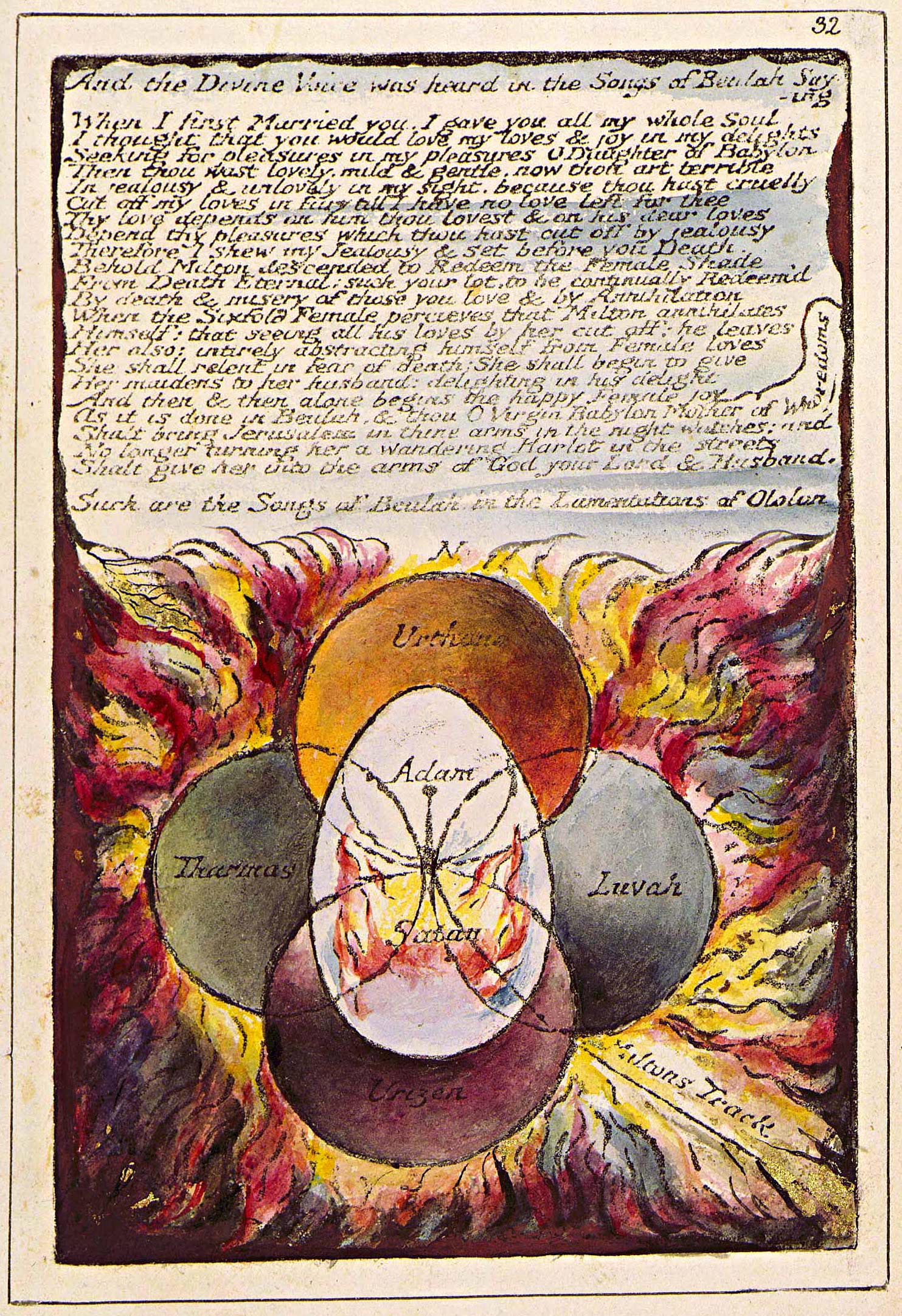
The underlying theme to all of Blake’s work was that through social and political conventions of the real, humanity had become further estranged and abstracted from the primacy of experiencing time and divinity as infinite.
His desire was situated in the raising of other men’s perceptions of the infinite through a communion with the body and of the land, often merging mythical accounts of the world’s historical records with an imagining of his own mythopoetic cosmology of the dreamscape and its relation to the universal mind.
This idea was expanded in his prophetic books and conceptualised as ‘The Four Zoas’ (or emanations of the ‘Eternal Body’), where the character of Albion the Giant represented the mythological archetype of the primeval man, the Birtish Isles and the Universe itself before the fall and subsequent division into the material realm.
The Zoas (emanations) were as follows:
Tharmas (unity of the body): representing instinct and strength.
Urizen (head - reason and horizon): conventional society; a cruel god of limitations, resembling the Gnostic Demiurge.
Luvah (heart): love, passion and emotive faculties; a Christ-like figure, also known as ‘Orc’ in his most amorous and rebellious form.
Urthona (loins), also known as ‘Los’: inspiration and imagination.
Their feminine counterparts were as follows:
Enion (earth mother, separation of unity)
Ahania (wisdom of the head)
Vala ( the nature of the heart)
Enitharmon (what can’t be attained in nature, the mystery, the sexual and creative impulse).
Found in their proper place of Eternity, the Zoas take up their original positions; the Sun of the imagination (Urthona - North), the Moon of the Emotions (Luvah - East), the Stars of Reason (Urizen - South) and the World of the Senses (Tharmas - West), thus for a well balanced individual, the forces of eternity; Imagination/Reason and Love/Lust become unified opposites, none repressed but all being cultivated through the Marriage of Heaven (the Soul) and Hell (the Body).
For his time, Blake’s ideas about organised religion were rebellious and his spiritual vision revolutionary and highly criticised by his peers who often thought him to be insane. However, Blake was carving a distinctive vision of humanity redeemed by self-sacrifice and forgiveness expressed through the liberation of the senses as opposed to a moral code being exacted by dogmas that restricted the imagination.
His negative attitude towards what he felt was the rigid and morbid authoritarianism of traditional religion was superimposed upon a perversion of ancient visions, where: “The ancient Poets animated all sensible objects with Gods or Geniuses, calling them by the names and adorning them with the properties of woods, rivers, mountains, lakes, cities, nations, and whatever their enlarged & numerous senses could perceive.” (source).
His desire was situated in the raising of other men’s perceptions of the infinite through a communion with the body and of the land, often merging mythical accounts of the world’s historical records with an imagining of his own mythopoetic cosmology of the dreamscape and its relation to the universal mind.
This idea was expanded in his prophetic books and conceptualised as ‘The Four Zoas’ (or emanations of the ‘Eternal Body’), where the character of Albion the Giant represented the mythological archetype of the primeval man, the Birtish Isles and the Universe itself before the fall and subsequent division into the material realm.
The Zoas (emanations) were as follows:
Tharmas (unity of the body): representing instinct and strength.
Urizen (head - reason and horizon): conventional society; a cruel god of limitations, resembling the Gnostic Demiurge.
Luvah (heart): love, passion and emotive faculties; a Christ-like figure, also known as ‘Orc’ in his most amorous and rebellious form.
Urthona (loins), also known as ‘Los’: inspiration and imagination.
Their feminine counterparts were as follows:
Enion (earth mother, separation of unity)
Ahania (wisdom of the head)
Vala ( the nature of the heart)
Enitharmon (what can’t be attained in nature, the mystery, the sexual and creative impulse).
Found in their proper place of Eternity, the Zoas take up their original positions; the Sun of the imagination (Urthona - North), the Moon of the Emotions (Luvah - East), the Stars of Reason (Urizen - South) and the World of the Senses (Tharmas - West), thus for a well balanced individual, the forces of eternity; Imagination/Reason and Love/Lust become unified opposites, none repressed but all being cultivated through the Marriage of Heaven (the Soul) and Hell (the Body).
For his time, Blake’s ideas about organised religion were rebellious and his spiritual vision revolutionary and highly criticised by his peers who often thought him to be insane. However, Blake was carving a distinctive vision of humanity redeemed by self-sacrifice and forgiveness expressed through the liberation of the senses as opposed to a moral code being exacted by dogmas that restricted the imagination.
His negative attitude towards what he felt was the rigid and morbid authoritarianism of traditional religion was superimposed upon a perversion of ancient visions, where: “The ancient Poets animated all sensible objects with Gods or Geniuses, calling them by the names and adorning them with the properties of woods, rivers, mountains, lakes, cities, nations, and whatever their enlarged & numerous senses could perceive.” (source).
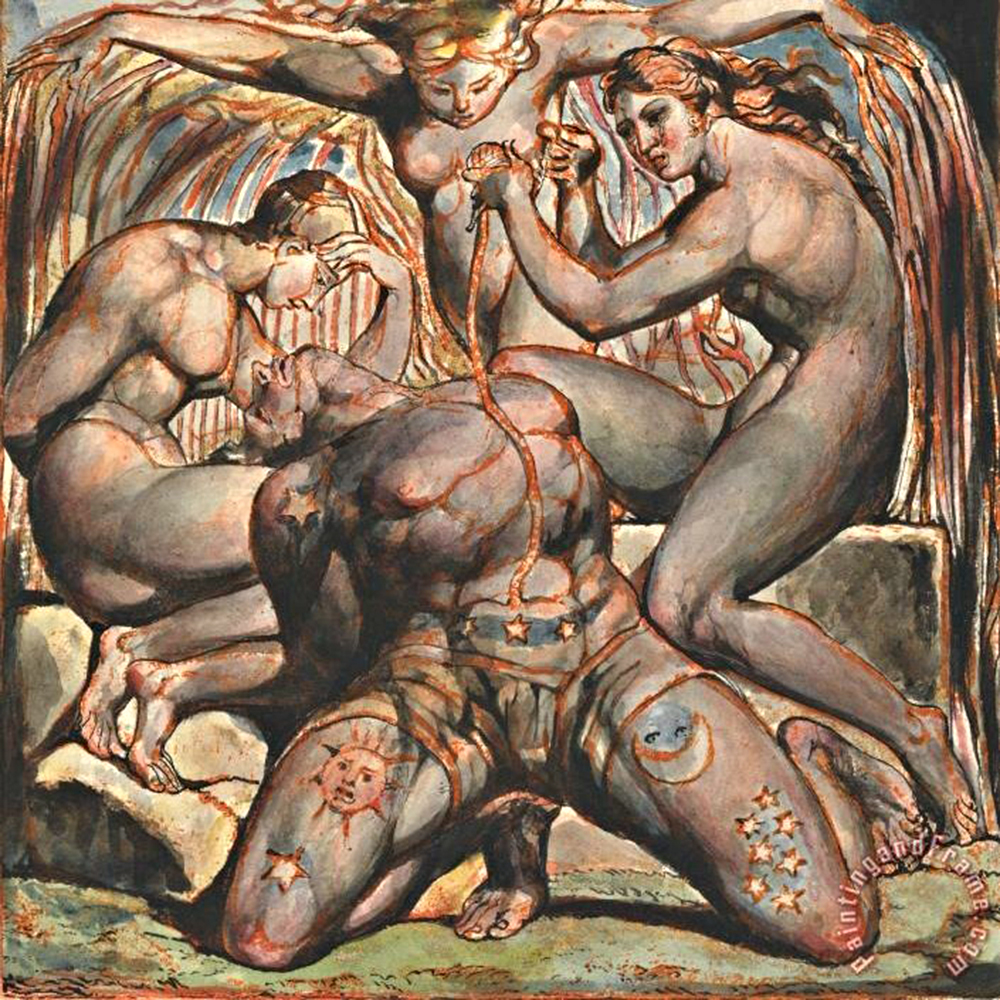

Orc, a character of Blake’s Mythos in his prophetic books, represented the revolutionary energy and revival of the spirit. A child of the split between the imagination and the creative impulse, he initially takes the form of a worm and evolves into a snake, where he is an epitome of wrath, frustrated desire and logic. In human form he is chained to a rock by the jealousy of his father Los (the creative impulse), high upon a mountain, in a similar vein to Prometheus. Whilst bound, his imagination is able to exist in a cave located in the Kingdom of Reason (Urizen) in much the same way as Plato used the allegory of the cave as the locale of the unconscious mind. Bound to the flickering images, the people inside the cave were unable to turn their heads towards the origin of the forms that cast the shadows.
The act of mental projection disturbed Urizen from the slumber of his logic, for after having made his Kingdom of Reason and the material Universe, Urizen, an eternally self sufficient being, became abstracted through his inability to control his creations and so was tormented by the very nature of infinity within himself. This dichotomy between the old figure of Urizen and the young, untamed energy of Orc, represented a singular cycle of destructive and creative essences. For Urizen, ruling alone was a force confining, and the passion of Orc, unattended, was a flame that burns to its own destruction. It was only after Urizen refrained from this eternal struggle with Orc that Orc himself could transform back into his eternal emanation, Luvah - the regenerative experience of love and emotion.
"Fiery the angels rose, and as they rose deep thunder roll'd. Around their shores: indignant burning with the fires of Orc.” - William Blake.
The act of mental projection disturbed Urizen from the slumber of his logic, for after having made his Kingdom of Reason and the material Universe, Urizen, an eternally self sufficient being, became abstracted through his inability to control his creations and so was tormented by the very nature of infinity within himself. This dichotomy between the old figure of Urizen and the young, untamed energy of Orc, represented a singular cycle of destructive and creative essences. For Urizen, ruling alone was a force confining, and the passion of Orc, unattended, was a flame that burns to its own destruction. It was only after Urizen refrained from this eternal struggle with Orc that Orc himself could transform back into his eternal emanation, Luvah - the regenerative experience of love and emotion.

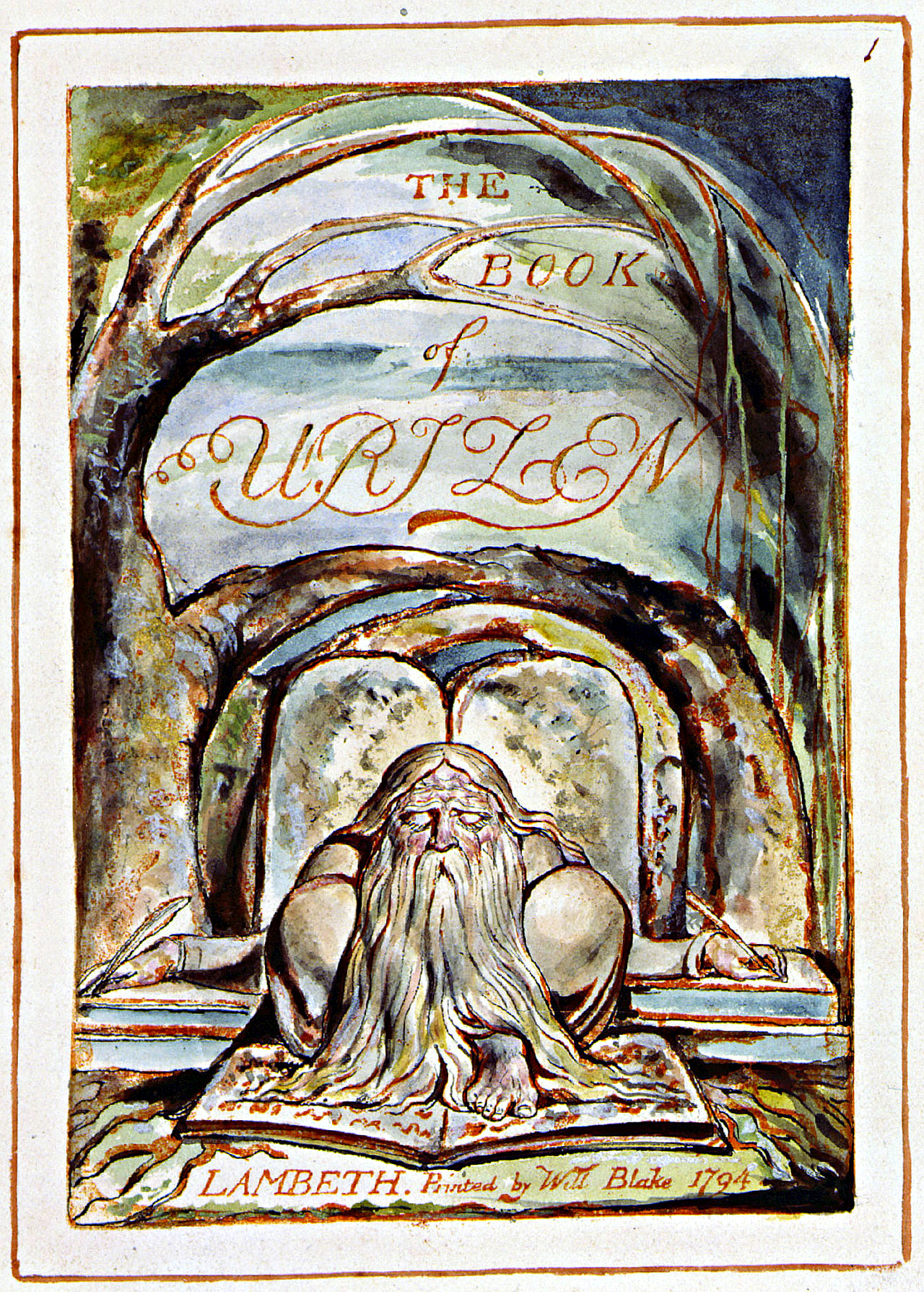
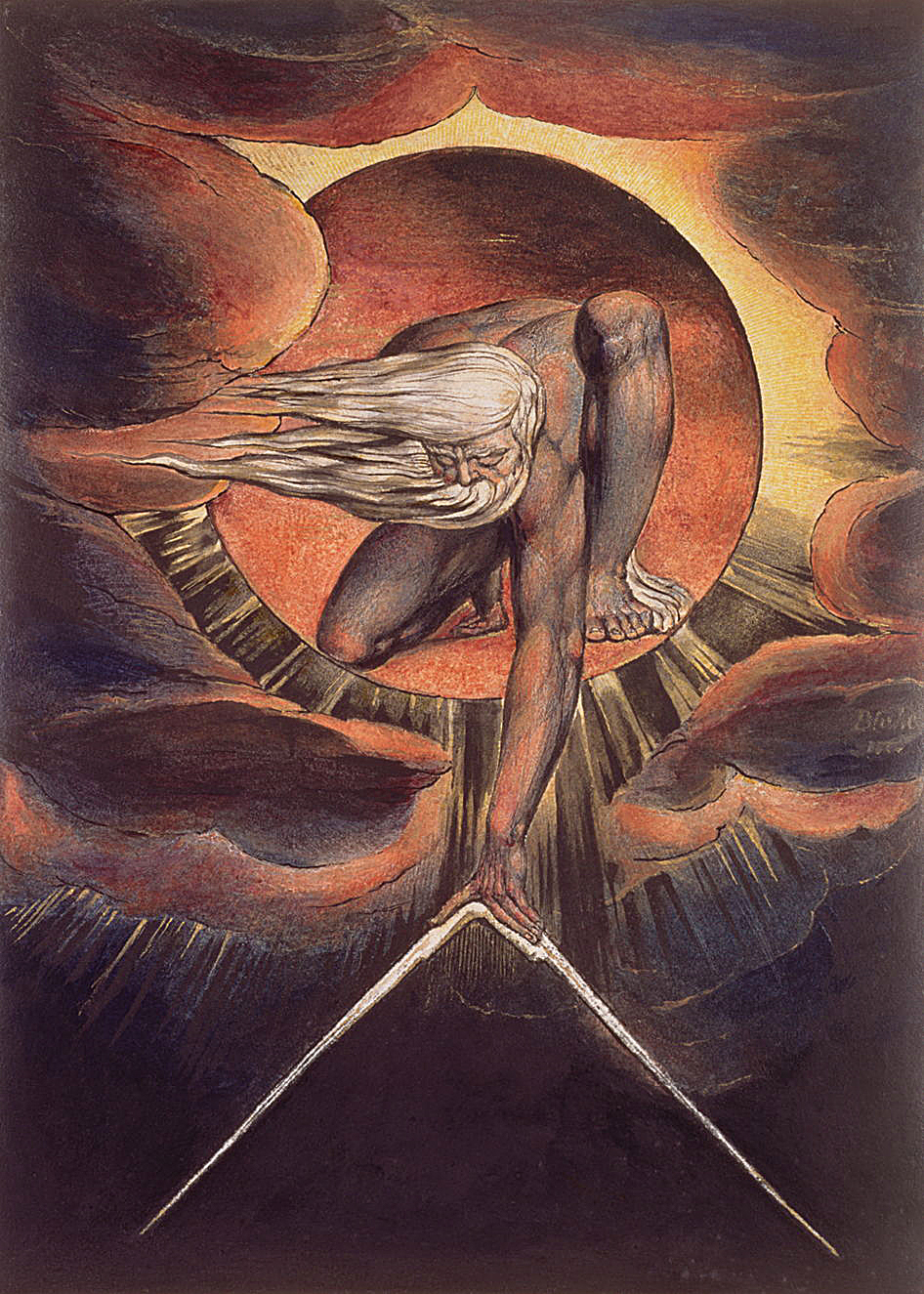
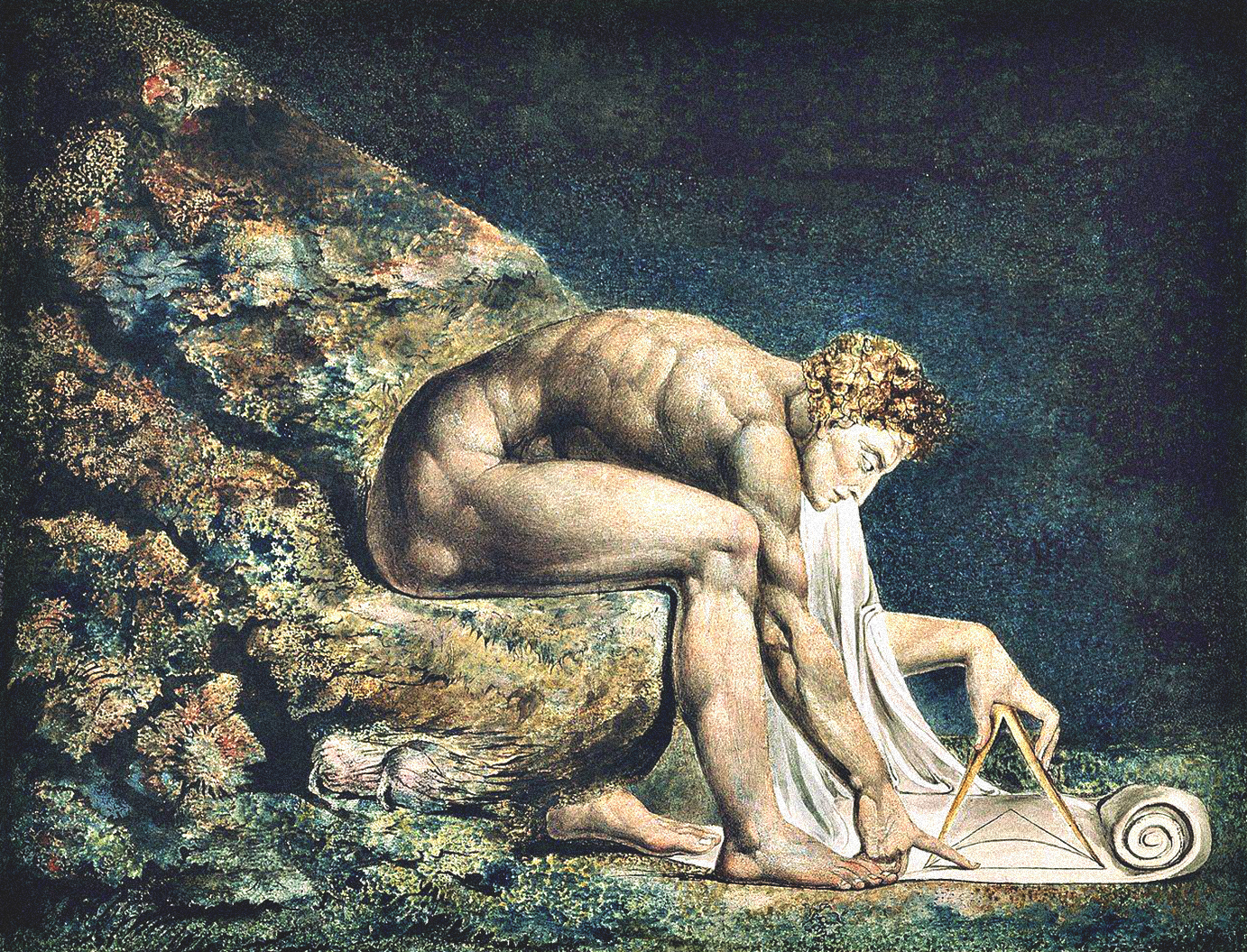
“Now I, a fourfold vision see,
And a fourfold vision is given to me,
Tis fourfold in my supreme delight,
And three fold in soft Beulah’s night,
And twofold Always. May God us keep,
From Single vision & Newton’s sleep.”
- William Blake.
Inspired greatly by other esotericists, polymaths, inventors, theologians and mystics, Blake came into contact with the works of Emmanuel Swedenborg (1668 - 1772). What came to be known as Swedenborgianism, although now comparatively a conservative Christian philosophy, in its conception, Swedenborg declared that he had communed with Christ whilst dining at a London tavern. This shadowy figure, who initially told him “Do no eat too much!”, would later appear in his dreams to give him directions on how to reform Christianity with the aims of creating a New Jerusalem.
Although Swedenborg had no intention of building such a physical place, this New Jerusalem would occupy the psychic grounds of personal experience in opposition to orthodoxy and dogmatism.
For Blake, Swedenborg’s ideas were initially regarded as poetic (although he was later to regard them as ‘spiritually pedestrian’), the concept of a New Jerusalem represented liberation from his disdain for Nationalism during the Napoleonic Wars and the rise of the Industrial Revolution, perceiving a clear link between imperialism and the commercialisation of the world. This vision can be summarised in the image of the young Newton (above), who’s intellectual faculties were born from the occult knowledge of alchemical traditions, yet were single-mindedly focussed upon their material and measurable affects, what Blake himself described as the “single vision of Newton’s sleep”.
Blake was not unfamiliar with eastern philosophical texts such as the Bhagavad Gita, which was first translated into english during his lifetime and which arguably supported his notions that all religions are one, and that the “philosophy of the east taught the first principles of human perception” (source). This eastern tradition, also particularly of Zen thought, contributed to the cosmology of the universal mind as it appeared in the mind of human societies, namely that of Urizen (reason and intellect), one of the four Zoas who abstracts the creative principle and reduces it to a ratio.
“Life as it is lived suffices. It is only when the disquieting intellect steps in and tries to murder it that we stop to live and imagine ourselves to be short of or in something. Let the intellect alone, it has its usefulness in its proper sphere, but let it not interfere with the flowing of the life-stream.“
- D.T Suzuki.
The theme of the four-fold nature of all things overcomes the illusion of duality as imposed by the intellect, and is a construct of all the world’s ancient systems of cosmology - which are all systems to aid in the integration of reason, passion and inspiration of the human body within the larger body of systems through which it interacts with the world. By knowing their proper place through self-examination, whilst not repressing either spheres of influence in temporal, moralistic judgements, were central to the Blakean philosophy of experiencing the divinity of the natural world by connecting to time and space at its vegetal and omnipresent origin. This was the immortal journey of self-renewal that Blake ascribed to the imagination, to ressurect the universal body of the land before the fall, to reinstate the power of the feminine, of sensuality, and above all, to reconnect the wonder of innocence with the energy of experience.






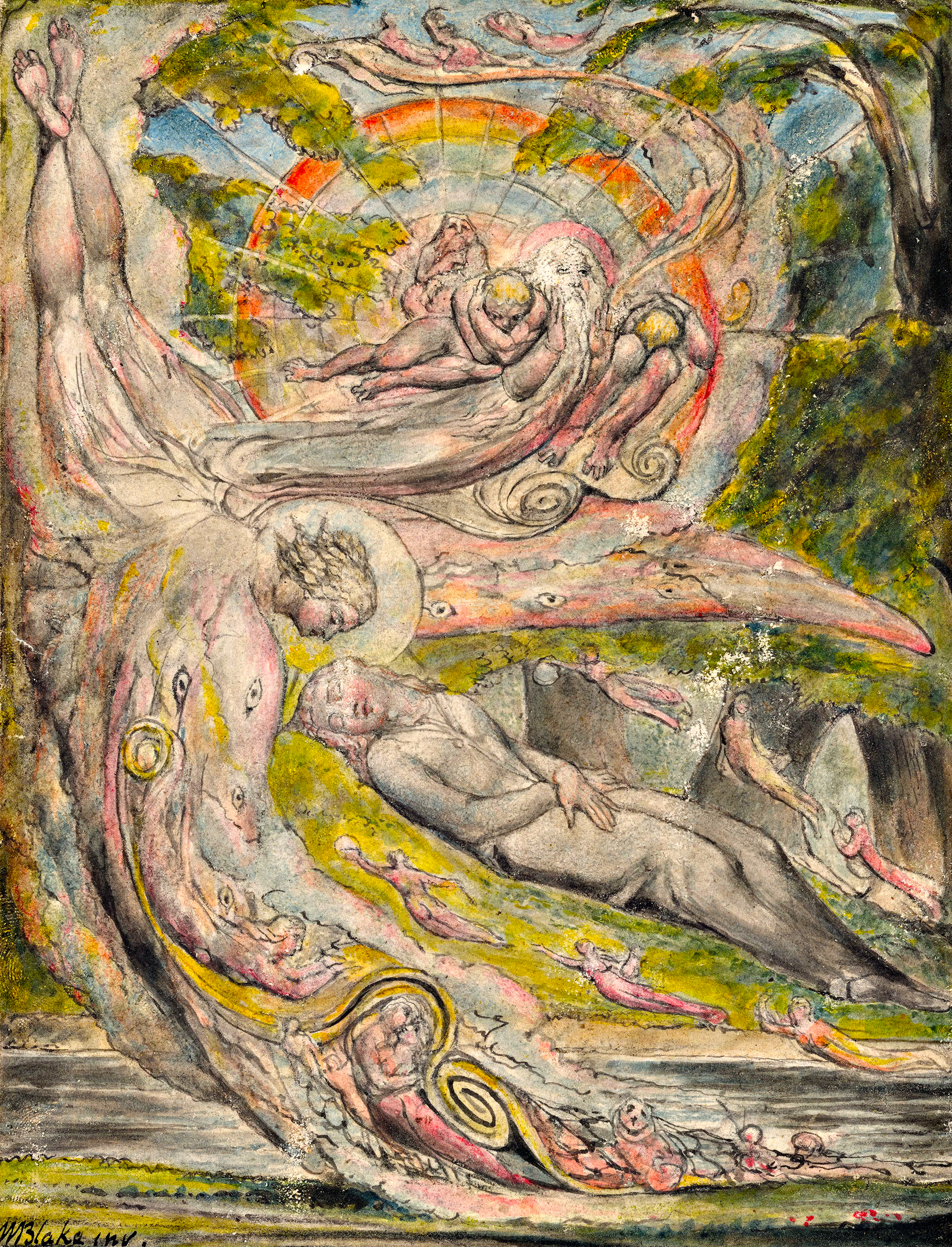
Further Reading ︎
Poetry Foundation, William Blake bio, article
Blake, Religion & Psychology, article
New Thinking Allowed: The Legacy of William Blake with James Tunney, video
Marshall Mcluhan, Lecture at the Museum of Modern Art, 1966, video
Aldous Huxley, The Doors of Perception, text
‘Introduction’ to Songs of Innocence & Experience, Allen Ginsberg, audio
A Blake Dictionary, Samuel Foster Damon, book
Ch’an Buddhism and the Prophetic Poems of William Blake, article
Poetry Foundation, William Blake bio, article
Blake, Religion & Psychology, article
New Thinking Allowed: The Legacy of William Blake with James Tunney, video
Marshall Mcluhan, Lecture at the Museum of Modern Art, 1966, video
Aldous Huxley, The Doors of Perception, text
‘Introduction’ to Songs of Innocence & Experience, Allen Ginsberg, audio
A Blake Dictionary, Samuel Foster Damon, book
Ch’an Buddhism and the Prophetic Poems of William Blake, article